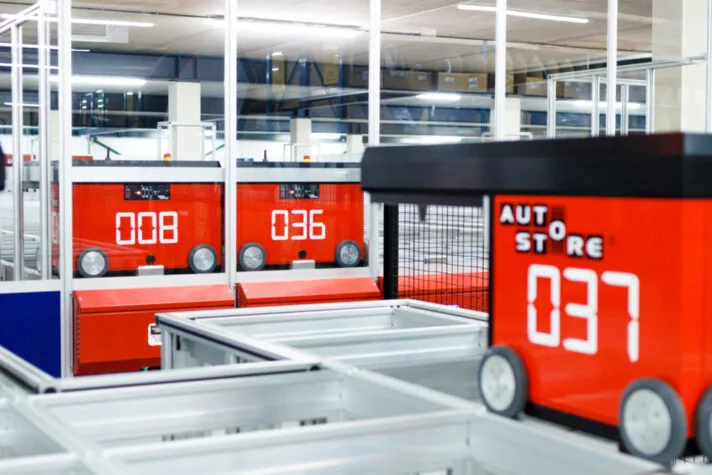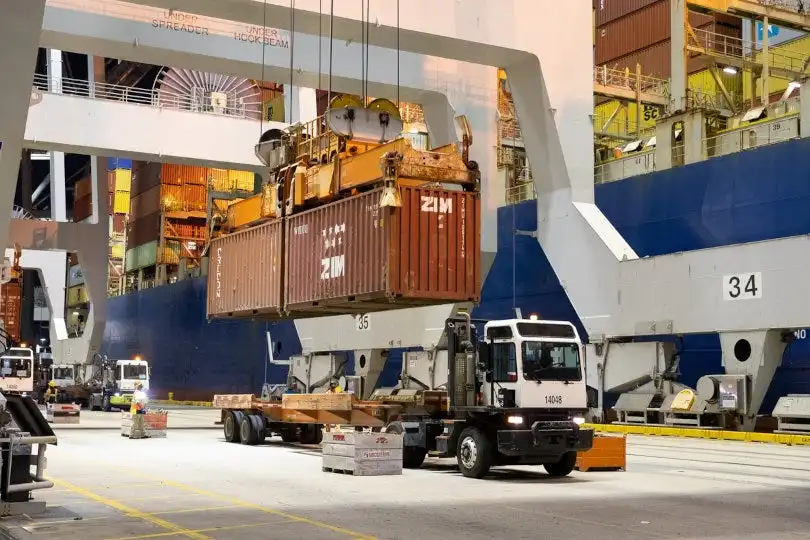With the exponential development and application of technologies, the digital world has already become an accepted norm in the corporate universe. The way that businesses think and operate is being disrupted by the Digital Age, and this has an impact on every aspect of a company, including logistics. The arrival of Logistics 5.0 is the result of this development in digital transformation.
Logistics 5.0 extends beyond “simple” automation of processes. It necessitates the integration of technologies and human effort in order to boost corporate competitiveness and profitability while also considering sustainability. This model is an example of an advanced approach for the global logistics sector.
One of the biggest benefits of this new era in logistics is the clever use of data, which makes it possible to make decisions with greater authority, lower risks, eliminate waste, and encourage socially conscious behavior. In light of this, Logistics 5.0 aims to encourage the thoughtful application of technology to guarantee communication and cooperation between humans, machines, and robots.
In this context, resources and tools which include cloud computing, geolocation, artificial intelligence, Internet of Things, and robot use are available. Collectively, they support realities that are essential to implementing Logistics 5.0, including process integration, ease and streamlining, and cost and time reduction during the manufacturing and logistics chain stages.
Understanding these trends and how Logistics 5.0 operates is crucial, especially for those in the increasingly competitive and dynamic field of foreign trade, since this tactic can provide an advantage over competitors. Discover more about this new era of logistics in this article, and realize how crucial it is to have expert counsel to improve the likelihood that it will be implemented successfully.
Read also: Top Game-Changing Logistics Trends for 2024: Redefining Global Supply Chains
What is Logistics 5.0?
The foundation of Logistics 5.0 is the idea that technology and people are complementary to one another rather than contradictory. Given the constraints imposed by the COVID-19 pandemic, it was able to observe an extraordinary rise in the demand for logistics, which led to the realization that technology advancements by themselves—without the optimization of human labor and sustainability—are insufficient.
As a result, it’s a working framework that aims to strategically employ industry technology in order to maximize the advantages of worker-robot or machine collaboration. It depends on data understanding to guarantee process sustainability and to minimize risks and waste that could arise at any point in the chain.
Currently, the digitalization of manufacturing, distribution, and inventory management processes is only one aspect of logistics. Teams can continuously evaluate their work model, remove bottlenecks, and make the most of their resources by using analysis and automation solutions. This has two significant benefits:
- Ensuring both profitability and competitiveness in industrial management;
- Acknowledging the importance of the human element, leveraging technology to produce dependable data that speeds up decision-making and boosts output.
Ultimately, for businesses to remain sustainable in the long run, they must make investments in innovation and technology to boost their competitiveness and provide more robust data-driven information.
What is the Difference Between Logistics 4.0 and 5.0?
The logistics industry started using technology extensively in the so-called Logistics 4.0 to enable the digitalization of operations and to leverage the information produced by the tools to enhance supply chain and distribution management procedures. Innovations in technology in logistics 5.0 are put to use not just for automation purposes but also to facilitate the establishment of a collaborative and interconnected system that values both the environment and human labor.
Logistics 5.0 focuses on benefits that could be obtained by integrating the workforce of both humans and machines, while Logistics 4.0 establishes that more automated labor leads to higher performance. Therefore, it may be claimed that Logistics 5.0 is refining and strengthening the knowledge that Logistics 4.0 provided, namely that process automation enables results maximization.
Supply Chain 5.0
The Supply Chain 5.0, is another concept in the framework of Logistics 5.0. It satisfies the hyper-personalization and hyper-customization of client wants and necessitates the proper balance between machine efficiency and human creativity. Humans can concentrate on creative work and problem-solving while machines do labor-intensive jobs.
Robots are frequently employed in manufacturing to complete repetitive activities, which streamlines the assembly process as a whole. Therefore, using robots to maintain high production volumes and product standards is quite beneficial for firms. Robots, however, are unable to interact directly with clients that require further support and direction. Here’s where the human factor really shines.
Above all, human-machine cooperation can provide the adaptability and productivity required to build resilience in an ever-changing setting.
In the end, Supply Chain 5.0 will leverage data to benefit from a human-machine relationship’s commercial advantages without requiring significant, risky investments.
Logistics 5.0 Benefits for Your Company
Logistics 5.0 offers businesses the following advantages by proposing to merge man and machine, maximize outcomes, ensure improved working circumstances, and provide well-being and quality of life:
- Lowering expenses for businesses;
- Improving working conditions;
- Appreciating labor;
- Decreasing employee attrition;
- Assigning more environmentally conscious and sustainable tasks and processes;
- Increased output, effectiveness, and caliber of the product;
- Better decisions, supported by data.
It is evident that Logistics 5.0 represents an important step forward in the global market, and maintaining competitiveness in this arena requires an awareness of its workings as well as the appropriate tools and techniques to use. Depending on qualified advice makes a huge difference! After all, to provide integrated and strategic logistics, it is vital to comprehend which procedures, methods, and equipment are most appropriate for each firm.
For businesses involved in the trade of goods, 3PL Links provides comprehensive and integrated solutions in international 3PL logistics. In addition to project creation and due diligence of the complete “Supply Chain” process, the company provides individualized services and operates in the major national and international ports and airports.
Discover our international 3PL logistics solutions and get in touch to find out more!




